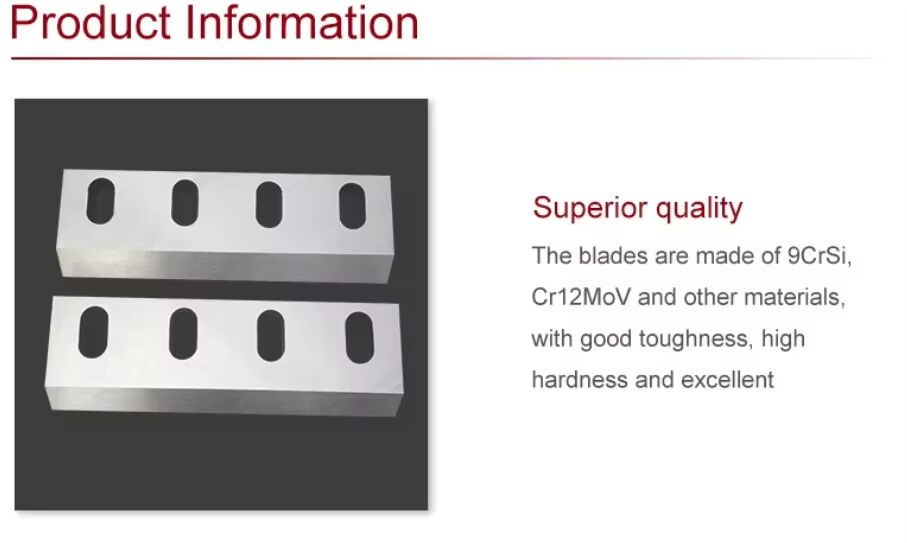Introduction
In the intricate world of machining, precision is paramount. This precision relies upon often overlooked yet indispensable components, such as the blade holder. While a blade holder may seem a simple part, it plays a pivotal role in securing cutting tools, transmitting drive, and maintaining consistency through diverse machining operations. Let us delve into the anatomy, purpose, and worth of blade holders in manufacturing, highlighting their inherent necessity in the production process.
The Constitution of a Blade Holder
A blade holder is a mechanical system intended to sustain a cutting tool in place during machining. Generally, it contains a body, a fastening system, and a shank attaching to the machine head. Distinct blade holder types like arbor-mounted, quick-change, and Weldon address specified applications and machine head prerequisites.
Purpose and Part of Blade Holders
Fundamentally, a blade holder serves to firmly fix the cutting tool, confirming it retains the desired placement and angle throughout machining. This fastening is fundamental for several reasons:
Securing the Cutting Tool: A blade holder must grip the cutting tool with sufficient force to prevent deviation or vibration during high-speed tasks.
Conveying Power and Torque: It must proficiently transport the power and torque from the machine head to the cutting tool without wastage.
Keeping Tool Alignment and Accuracy: Correct alignment is pivotal for accomplishing the desired tolerances and surface finishes on the workpiece.
Enabling Tool Changes and Adjustments: For example, quick-change blade holders allow expedited tool changes, reducing downtime and boosting productivity.
The Importance of Blade Holder Selection
Selecting the ideal blade holder involves more than finding one that fits the machine tool; it also requires choosing a holder that complements the machined material and specified cutting parameters. An improper selection can contribute to poor cutting performance, shortened tool life, and even unscheduled downtime due to tool failure.
Safety Attributes of Blade Holders
Safety is a critical factor in any machining operation. Blade holders aid safety by incorporating locking mechanisms to prevent unexpected rotation or ejection of the cutting tool during operation. They are engineered to withstand substantial pressures and vibrations, reducing the danger of tool fracture and potential harm. Properly designed holders also decrease operator exposure to hazards by confirming tools are securely fixed and specified cutting parameters are sustained.
Types of Operations Utilizing Blade Holders
Blade holders serve a variety of machining operations, including turning where the workpiece rotates against the radially fed cutting tool, milling involving a multi-toothed cutter's rotation to remove material, drilling to generate round cavities by material removal, and boring for enlarging and finishing internal diameters with precision.
Benefits with Blade Holders
Advantages to using blade holders include:
Blade holders boost the life of a cutting tool and also enhance its performance by positioning it accurately be securing it in place.
Better Manipulation of Cutting Parameters: Precision handling feed rates and depths of cut enhance the cutting parameters setup which provides an improved machining result.
Better Workpiece Surface Finish: the proper holding of attendant tool can lead to smoother and more precise surface finish.
Chose: Although the cost of purchasing high-end blade holder solutions can quickly add up, they are an excellent investment as far as long-term productivity and reduced tool replacement go.
Blade Holder Maintenance and Care
Blade holders need to be maintained properly in order for them to last longer and perform better. This will involve all of the steps to; clean any swarf or debris away, check for wear and damage then lubricate to avoid corrosion. Part of this regular maintenance will be to make certain the clamping mechanism and overall structure of the holster is still in one solid piece.
Blade Holder Technology Trends of the Future
The design and functionality of blade holders continue to evolve as technology advances. Among soon-to-be-trending innovations are tougher materials for workhorse applications, closer tie-ins to smart manufacturing systems for live monitoring and adjustment, and ergonomic features that can make it easier (and safer) for people loading blades.
Conclusion
Although not the most remarkable components on a machine tool, blade holders play an essential role in achieving precision, capability and optimum performance when machining. Understanding the roles and significance of blade holder, machinists are in position to select a suitable holder for their applications which turn out to be more productive machining results.
Table of Contents
- Introduction
- The Constitution of a Blade Holder
- Purpose and Part of Blade Holders
- The Importance of Blade Holder Selection
- Safety Attributes of Blade Holders
- Types of Operations Utilizing Blade Holders
- Benefits with Blade Holders
- Blade Holder Maintenance and Care
- Blade Holder Technology Trends of the Future
- Conclusion

 EN
EN
 AR
AR
 HR
HR
 CS
CS
 DA
DA
 NL
NL
 FI
FI
 FR
FR
 DE
DE
 EL
EL
 IT
IT
 JA
JA
 KO
KO
 NO
NO
 PL
PL
 PT
PT
 RO
RO
 RU
RU
 ES
ES
 SV
SV
 IW
IW
 ID
ID
 LV
LV
 LT
LT
 SR
SR
 SK
SK
 SL
SL
 UK
UK
 SQ
SQ
 ET
ET
 HU
HU
 TH
TH
 TR
TR
 FA
FA
 AF
AF
 MK
MK
 KA
KA
 UR
UR
 BN
BN
